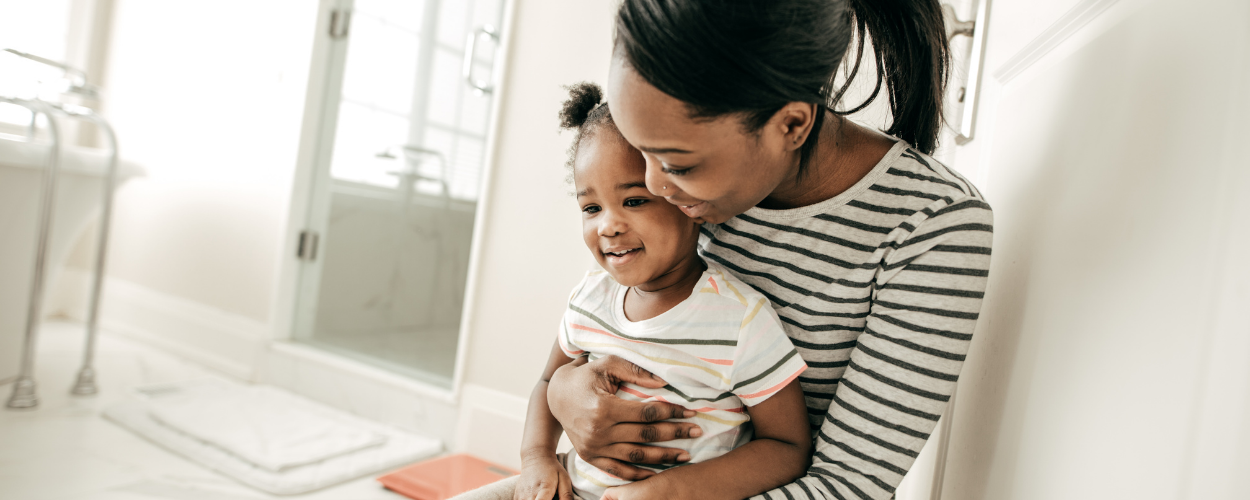Potty training is one of those milestones that comes with a lot of advice, opinions, and, honestly, pressure. Everyone seems to have a “secret” method that worked for their kid, but the truth is… there’s no one-size-fits-all. Toddlers develop at different rates, and their readiness for potty training can vary widely. Some show signs as early as 18 months, while others might not be ready until 3 years old. And that’s completely normal!
So, how do you know when your toddler is ready to take the leap? While every child is unique, there are a few signs you can watch for:
1. They can communicate their needs
One of the first signs of readiness is communication. This doesn’t necessarily mean they’re using full sentences, even gestures or simple words like “pee” or “poop” count. When toddlers can let you know they need a diaper change, they’re starting to develop the self-awareness that’s important for potty training.
2. They stay dry for longer periods
If you notice that your toddler’s diaper stays dry for a couple of hours, it’s a sign that their bladder is maturing. This doesn’t mean they’re ready overnight, but it’s an encouraging step. Some kids might even wake up from naps with a dry diaper, a big milestone in itself.
3. They show curiosity about the potty
Curiosity is a great motivator. If your toddler wants to watch you use the toilet, sit on a potty chair, or asks questions about what goes on there, it’s a sign they’re paying attention and starting to understand the process. Encouraging this interest in a fun, low-pressure way can make potty training a more positive experience.
4. They can follow simple instructions
Being able to follow simple directions like “go get your potty” or “pull down your pants” is an important skill for potty training. It shows that your toddler can understand the steps involved and participate in the process, a combination of comprehension and independence that helps set them up for success.
5. They show discomfort with dirty diapers
Many toddlers start to dislike sitting in a wet or messy diaper. They might squirm, complain, or even try to remove it themselves. This awareness of discomfort is a key signal that they’re starting to connect the feeling of a full diaper with the need to go potty.
6. They start developing independence
Potty training is about more than just using the toilet, it’s a big step in a toddler’s growing independence. If your little one is already showing signs of wanting to do things on their own, like washing their hands, dressing themselves, or feeding themselves, they might be ready to take the next step toward using the potty.
Tips for a positive potty training experience:
Even when you notice all the signs, potty training can still be unpredictable. Here are a few tips to make the process smoother:
• Keep it stress-free:Avoid pressure or punishment. Celebrate small wins, even if it’s just sitting on the potty.
• Make it fun:Let your toddler pick out their potty, or use stickers and small rewards as encouragement.
• Be consistent: Establish a routine, but remain flexible. Toddlers do best with structure, but they also need time to adjust.
• Use the right gear: Believe Bottoms Up Training Underwear by Believe Baby is designed to be absorbent and leak-resistant, helping toddlers feel more confident while you handle any accidents with gentle, convenient wipes.
Remember: every child is unique 💙
There’s no strict timeline for potty training. Some toddlers may take to it quickly, while others need weeks or even months to feel confident. What matters most is observing your child’s readiness, responding to their cues, and creating a supportive, encouraging environment.
Potty training is a big milestone, but it doesn’t have to be stressful. With patience, consistency, and the right tools, you and your toddler can navigate this stage together, and celebrate every little win along the way.



